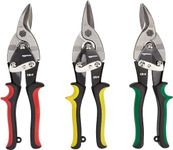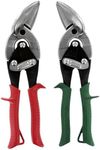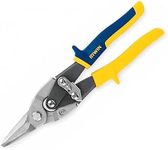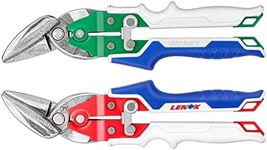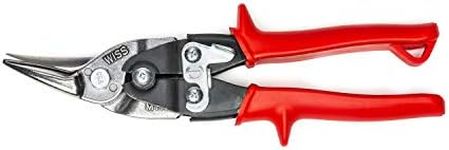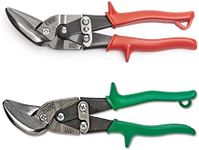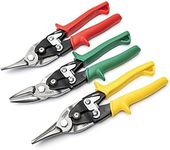Buying Guide for the Best Tin Snips
Choosing the right tin snips is important for anyone working with sheet metal, whether for DIY projects, home repairs, or professional tasks. Tin snips come in various types and sizes, each designed for specific cutting needs. Understanding the key features will help you select a pair that feels comfortable, cuts efficiently, and matches the type of work you plan to do. Consider what materials you'll be cutting, the shapes you need to make, and how often you'll use the tool.Type (Straight-cut, Left-cut, Right-cut)Tin snips are categorized by the direction they are designed to cut: straight-cut, left-cut, and right-cut. Straight-cut snips are best for making straight lines and gentle curves, while left-cut and right-cut snips are designed to make tight curves to the left or right, respectively. This is important because using the correct type makes cutting easier and results in cleaner edges. If you mostly cut straight lines, straight-cut snips are ideal. If you need to make lots of curves or circles, choose left-cut or right-cut snips based on the direction of your cuts.
Cutting CapacityCutting capacity refers to the maximum thickness and type of metal the snips can handle, usually measured in gauge. Thicker metals require snips with higher cutting capacity. This is important because using snips on material that is too thick can damage the tool and make cutting difficult. If you work with thin sheet metal, most standard snips will suffice. For thicker or harder metals, look for snips rated for those materials to ensure safety and efficiency.
Blade MaterialThe blade material affects the durability and sharpness of the snips. Common materials include forged steel or hardened steel, which are strong and hold an edge well. This is important because better blade material means the snips will last longer and cut more cleanly. If you use snips frequently or on tough materials, choose a pair with high-quality steel blades. For occasional use on softer metals, standard steel blades are usually adequate.
Handle Design and ComfortHandle design includes the shape, grip, and whether the handles are cushioned. Comfortable handles reduce hand fatigue and improve control, especially during long cutting sessions. This is important for both safety and ease of use. If you have larger hands or plan to use the snips for extended periods, look for ergonomic, cushioned handles. For occasional or short-term use, basic handles may be sufficient.
Length of SnipsThe length of tin snips, usually measured in inches, affects leverage and the size of the cuts you can make. Longer snips provide more leverage and are better for long, straight cuts, while shorter snips offer more control for detailed or curved cuts. This is important because the right length makes your work easier and more precise. If you need to make long, straight cuts, choose longer snips. For intricate or tight curves, shorter snips are preferable.
Locking MechanismSome tin snips come with a locking mechanism to keep the blades closed when not in use. This feature is important for safety and storage, preventing accidental cuts and protecting the blades. If you value safety or need to carry your snips in a tool bag, look for a pair with a reliable locking mechanism. If you always store your tools in a safe place, this feature may be less critical.

